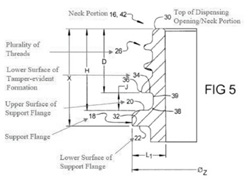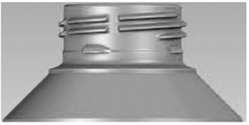The US Court of Appeals for the Federal Circuit affirmed a district court’s denial of attorneys’ fees, explaining that when a district court denies summary judgment and allows a plaintiff’s case to proceed, the district court effectively determines that the position of the party opposing summary judgment is not objectively baseless. OneSubsea IP UK Limited v. FMC Techs, Inc., Case No. 22-1099 (Fed. Cir. May 23, 2023) (Moore, Clevenger, Dyk, JJ.)
OneSubsea and FMC compete in the subsea oil and gas exploration and extraction industry. In March 2015, OneSubsea filed a lawsuit against FMC alleging infringement of 95 claims across 10 OneSubsea patents. After the district court issued its claim construction ruling, FMC moved for summary judgment of noninfringement. OneSubsea opposed. While the summary judgment motion was pending, the Patent Trial & Appeal Board instituted inter partes review (IPR) proceedings on a subset of the asserted patents. FMC argued that while a stay of district court proceedings would be appropriate, it was unnecessary in light of its pending summary judgment motion. In August 2016, the district court denied summary judgment and stayed the case.
The case remained stayed for three years, during which time the Board invalidated 76 claims. In 2019, the district court lifted the stay. At a pre-trial hearing in 2020 discussing whether additional discovery was needed to address summary judgment, FMC doubted the need for more discovery and pointed to the 3,200 record pages illustrating differences between the designs of the accused device and the patented devices. In response, the district court stated, “And you really think I’m going to be able to grant summary judgment on that?” After the hearing, FMC renewed its summary judgment motion, which OneSubsea opposed. In reply, FMC moved to exclude the report of OneSubsea’s expert because he applied the wrong claim construction. Ultimately, the district court granted FMC’s motion to exclude and its motion for summary judgment.
In 2021, FMC moved for attorneys’ fees based on OneSubsea’s “substantively weak infringement claims” after the claim construction order was issued and “litigation misconduct.” After briefing was complete, the district court announced that the case had been reassigned to another judge following the retirement of the original assigned judge. The new judge rejected FMC’s view that OneSubsea’s case was objectively baseless and further rejected FMC’s claims of litigation misconduct. FMC appealed.
As a threshold matter, FMC argued that the Federal Circuit should apply de novo review instead of an abuse-of-discretion standard because the new judge only briefly “lived with the case” and should be disqualified from exercising discretion in deciding FMC’s attorneys’ fees motion. The Court rejected FMC’s invitation to change the standard of review, citing the substantial body of law in which appellate courts have consistently reviewed successor judges’ decisions on discretionary issues for abuse of discretion.
Turning to the merits, the Federal Circuit found that FMC’s exceptional case argument lacked merit. The Court explained that the argument disregarded the district court’s observation that FMC’s demand for a prompt favorable noninfringement judgment based [...]
Continue Reading
read more

 Subscribe
Subscribe





